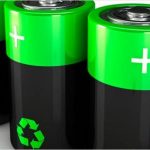
Robots emerging as the perfect tool for dangerous underwater mining missions
Thursday, March 08, 2018 by David Williams
http://www.futuresciencenews.com/2018-03-08-robots-perfect-tool-for-dangerous-underwater-mining-missions.html

The majority of the Earth’s waters are pretty much virgin territory, probably in even more ways than you can imagine. More than simply being home to many yet-to-be identified animal species, it also holds tons of valuable resources that are just sitting there and waiting to be harvested.
The problem is that the deep ocean is quite inhospitable, making it impossible for humans to go out there and perform simple mining operations easily. Enter giant mining robots. Big, bulky machinery just might be the golden ticket to getting the most out of the ocean. That’s the idea that Nautilus Minerals has in mind as it tries to kickstart a whole new industry by using giant underwater mining robots sitting atop a 700-foot-long ship.
Nautilus Materials is a Canadian company that has taken years to prepare for its latest project, which involves the use of three separate robots on a platform that it calls the Production Support Vessel (PSV). Its current base of operations is somewhere off the coast of Papua New Guinea, where it will be used on the Solwara 1 seabed to retrieve copper and silver deposits that are said to be about 10 times more in concentration compared to what one might find on land.
The task at Solwara 1 is rather simple, but because Solwara 1 is rather big, it becomes such a monumental task – so much so, that Nautilus Minerals needs to use three giant machines to work on it. And that’s not even counting all of the smaller robots and machinery that will be used by the company to assist in the major parts of their mission.
Part of what makes the mission so difficult is the fact that the seawater in Solwara 1 is super-heated to almost 400 degrees Celsius due to volcanic activity and jets from the seabed. When the hot water mixes with cold seawater in the area, it results in tall rock chimneys that are filled with highly valuable resources, which are referred to as seafloor massive sulfides (SMS). Nautilus Minerals’ mission is simply to retrieve them.
But again, they need to use complex machinery because of how difficult it is to pull off. According to Mark Collins, the managing director of remotely operated underwater vehicle (ROV) systems at Soil Machine Dynamics, that’s just the way things are on the ocean. “Everything you do on land is 10 times more difficult underwater,” he said in a statement given to Popular Mechanics. And that is exactly why, on top of all three giant robots already mentioned, Nautilus Minerals will also rely on a few other smaller robots.
All three of Nautilus Minerals’ biggest robots are going to be tethered to the surface with long umbilical cables and powered by electricity. The first two are meant to cut up the raw materials found on the floor of the seabed, while it’s the third one’s job to agitate the stuff left by the first two and to stir it all up with seawater so that it can be sucked up in a slurry. The resulting slurry will be channeled through three 440-horsepower dredge pumps to the Subsea Slurry Lift Pump before being sent up to the surface.
While the use of all this machinery will certainly cut back on the potential danger for human life, Nautilus Minerals’ mission is not without concern. However, the company maintains that these operations are completely safe, saying that multiple environmental impact analyses with universities and environmental institutions have shown that they will cause little disturbance compared with land-based mines. In fact, they said that their project on Solwara would only cause around one-tenth the disruption of an equivalent terrestrial mine.
In any case, the success of the company with this particular operation remains to be seen. If they can somehow pull it off without any problems, it could become the start of a new era in underwater mining with giant robots.
Find out other innovative uses of robots in Robotics.news.
Sources include:
Tagged Under: Tags: automation, danger, dangerous jobs, future tech, goodscience, marine life, Nautilus Minerals, Ocean, risk, robots, sea mining, sea robots, seawater, underwater mining, underwater resources, water mining





